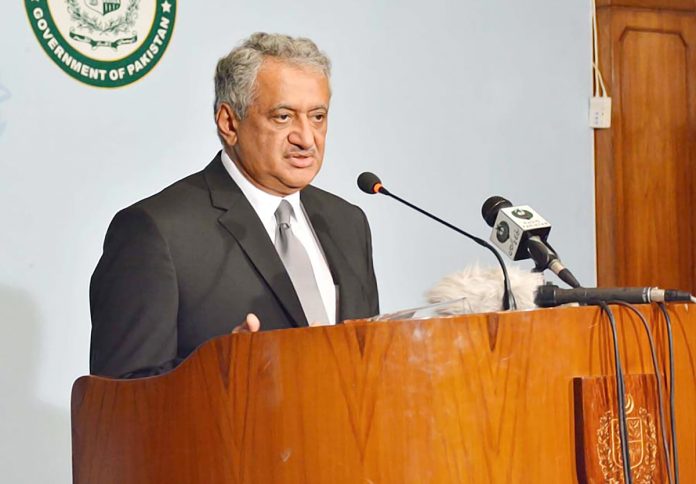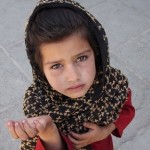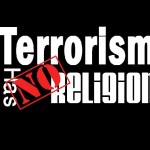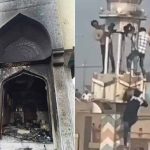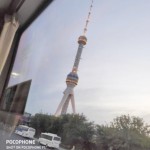Pakistan reaches out to us over Indian role in killings
Pakistan has reached out to the US and Canada over Indian role in orchestrating the assassinations of two Pakistani citizens within its borders last year. A senior Pakistani diplomat disclosed that this was done to share information with the two countries, who had also been victims of India’s “transnational killings program”.
The diplomat said operations in three countries resembled in sophistication, compartmentalization, and the use of criminal syndicates. New Delhi has been facing international criticism and investigation due to accusations of running “a covert assassination program” that targets its critics and opponents abroad.
“Ambassador (R) Qazi M. Khalilullah, Executive Director of the Center of International Strategic Studies Sindh (CISSS) tweeted on the matter: “Revelation about the involvement of Indian RAW agents in killing of two Pakistan’s citizens must not have come as a surprise to the two North American countries who’s nationals too were victim/target of India sponsored terrorism recently.’ ‘Emergence of India as translational #killer poses a grave threat to international peace and security as countries targeted by New Dehli’s global terror network include global powers, NATO members, and nuclear weapon states,’ he added.”
Mr. Sun Weidong, Vice Foreign Minister of the People’s Republic of China called on General Syed Asim Munir, NI (M), Chief of Army Staff (COAS), at GHQ.
Mr. Sun Weidong, Vice Foreign Minister of the People’s Republic of China called on General Syed Asim Munir, NI (M), Chief of Army Staff (COAS), at GHQ today. During the meeting matters of mutual interest and measures to further enhance bilateral defense cooperation were discussed.
Chinese Vice Foreign Minister said that Pakistan and China are all-weather strategic partners. He acknowledged Pakistan’s efforts towards regional peace and stability and also conveyed China’s satisfaction with security arrangements for CPEC projects. COAS thanked the visiting dignitary for his warm remarks and said that relations between Pakistan and China are founded on a common understanding of regional peace, stability, and prosperity for the people of both countries.
Courtesy: ISPR
General Syed Asim Munir, NI (M), Chief of Army Staff (COAS) visited Pakistan Ordnance Factories (POF) Wah
General Syed Asim Munir, NI (M), Chief of Army Staff (COAS) visited Pakistan Ordnance Factories (POF) Wah today. COAS was briefed about the production capabilities of POF, its contributions towards fulfilling the defense requirements of the Pakistan Armed Forces, and export potential. COAS witnessed a wide range of POF Products including indigenously designed and manufactured new weapons and ammo under test & trials.
While addressing the POF officers and staff, COAS appreciated their contributions to the security and economy of the country by making POF the prime defense industry of Pakistan. “Path to national progress is defined by indigenous and local industries like POF Wah. We will continue to work for self-reliance and the latest technology which is essential towards ensuring reliability and strengthening the defense of Pakistan.” COAS remarked. Earlier on arrival, COAS was received by Chairman POF Wah.
Courtesy: ISPR
2nd meeting of Pakistan, KSA and Turkiye trilateral defence collaboration was held at GHQ, Rawalpindi on 8 January 2024
The 2nd Meeting of Pakistan, KSA, and Turkiye Trilateral Defense Collaboration was held at GHQ, Rawalpindi on 8 January 2024. The meeting provided an opportunity to discuss prospective collaboration in defense equipment technologies including research & development. The three sides reaffirmed the importance of combining the intellectual, technical, financial, and human resources of the three friendly nations towards the achievement of shared objectives and attainment of self-sufficiency in the defense domain.
Acknowledging the historical brotherly relations, the three sides reiterated the strategic intent to increase the scope of trilateral cooperation and the need to enhance the pace of collaboration in pursuit of common goals. Three sides agreed to convene the next meeting on Trilateral Defense Industrial Collaboration during the World Defense Show in Riyadh, KSA in February 2024.
Courtesy: ISPR
India’s republic day observed as a black day in AJK
Protest demonstrations were held in different parts of Azad Jammu and Kashmir (AJK) on Friday (26/01/2024) to mark India’s so-called ‘Republic Day’ as a black day and condemn its unparalleled atrocities on the freedom-seeking Kashmiris amid perpetual denial of their internationally acknowledged right to self-determination.
Participants of these events were wearing black armbands, holding black flags and black balloons in addition to banners and placards inscribed with anti-India and pro-freedom slogans. They not only condemned the Indian army’s atrocities in occupied Kashmir but also the incessant attacks of Hindu extremist organizations on Indian Muslims with full official backing.
Courtesy: Dawn.
Pakistan conducts ‘operation Marg bar Sarmachar’
On January 18, 2024, Pakistan initiated a series of air and artillery strikes within Iran’s Sistan and Baluchistan province, targeting Baloch separatist groups. The operation, codenamed “Operation Marg Bar Sarmachar” (meaning ‘Death to Insurgents’), was carried out in response to Iranian missile strikes in Pakistan’s Baluchistan province two days prior.
Iran reported that nine foreign nationals lost their lives in the attack, a fact confirmed by the Balochistan Liberation Army (BLA), acknowledging the casualties among its members. The Ministry of Foreign Affairs from Pakistan stated that the country executed a series of highly coordinated and precisely targeted military strikes against terrorist hideouts, referred to as “Marg Bar Sarmachar.”
These operations resulted in the elimination of several terrorists, with the rationale being the “lack of action” by Iran regarding the presence of “Pakistani-origin terrorists” on its soil. According to the Inter-Services Public Relations of the Pakistani military, the targeted hideouts were being utilized by militants associated with the Baluchistan Liberation Army (BLA) and the Baluch Liberation Front (BLF), including individuals such as Dosta (alias chairman), Bajjar (alias Soghat), Sahil (alias Shafaq), Asghar (alias Basham), and Wazir (alias Wazi). On January 19, Anwaar ul Haq Kakar announced the restoration of normal diplomatic relations with Iran. This decision followed a statement from the foreign ministry indicating that both nations had agreed to “de-escalate the situation.”
I11 days and counting… an overview of the miseries and losses!
On January 26, the International Court of Justice (ICJ) ordered Israel, in a case lodged by South Africa to the court, to take action to prevent genocide and help civilians of Gaza in the ongoing war it waged in Gaza. Unfortunately, the genocide is yet in progress, causing humanitarian crises. Here, an analysis of the overall devastations of Gaza, as of 25 January 2023, is compiled and published.
Total Casualties
– Gaza’s Health Ministry said that the death toll has climbed to more than 26,000 people, up to 70 percent of them are women and children. Additionally, more than 64,400 got injured; more than 11,000 among them are children.
– At least 341 Internally Displaced Persons (IDPs) have been killed in UNRWA facilities, with a further 1,180 injured due to the hostilities since 7 October.
Missing persons
– As many as 7,000 people in Gaza went missing; many of them are reported to be buried under the rubble of devastated buildings.
Internally displaced people
– With the crisis growing in Khan Yunis and other northern areas of Gaza, an estimated 1.7 million people are internally displaced.
– 1.3 million people, more than 50 percent of Gaza’s population, including 609,700 children, seek shelter in only one governorate in the south of the Gaza Strip, the Rafah governorate, the Office of the High Commissioner for Human Rights (OHCHR) reports.
– Most of the 1.7 million Palestinians displaced by the war are crowded into Rafah.
Killing of Medical / Aid workers:
– Israeli bombardment has killed more than 337 medical personnel, and 45 fire brigade drivers and silenced voices of more than 119 journalists by killing them.
– The United Nations Relief and Works Agency for Palestine Refugees in the Near East (UNRWA) reports that 152 UNRWA staff have been killed, while the World Health Organization (WHO) and United Nations Development Programme (UNDP) report one staff member killed respectively.
Mass Casualties
– Approximately 2,119 Palestinians so far have been mass-murdered, authorities in Gaza claim.
Bombardments
– It is reported by Press TV Iran that Israeli regime has dropped 67,000 tons of bombs on Gaza since October 7.
Infrastructural Damages:
– As many as 140 state-owned buildings and 99 schools and universities have been completely damaged as a result of Israel’s bombardments. 378 schools, which makes 76 per cent, sustained damage in the Gaza Strip, the Global Education Cluster reports.
– 161 mosques are destroyed in addition to some 253 which are partially damaged. Moreover, 3 churches are also abolished completely.
– 70,000 residential units are completely devastated whereas 90,000 are left in a condition that cannot be re-accommodated.
– 30 hospitals and 53 healthcare centers are non-operational and 122 ambulances are completely damaged.
– 150 healthcare centers are partially damaged as a consequence of Israel’s bombing incidents.
– More than 200 historical and cultural sites have been damaged.
– As of late January, there have been 249 incidents of attacks impacting 141 UNRWA installations, of which 70 installations have sustained direct hits.
– Over 625,000 students and 22,564 teachers have been deprived of education and a safe place for over three months and thousands among them killed.
Food Insecurity
Over 90% of the population faces high levels of acute food insecurity in the Gaza Strip (IPC Phase 3 or above), as provided by the Integrated Food Security Phase Classification.
Unveiling India’s hostile posture: tracing the journey from Babri Mosque to Ram Temple
India’s Prime Minister, Narendra Modi, has officially opened a temple dedicated to the Hindu deity Ram in Ayodhya, Uttar Pradesh. This event marks the conclusion of a forty-year push by Hindu extremist factions to construct the temple. The Organization of Islamic Cooperation (OIC) has strongly criticized the construction and inauguration of the ‘Ram Mandir’ on the site of the Babri Masjid in Ayodhya, India. The OIC expressed grave concern over the actions, denouncing them as an attempt to obliterate the Islamic landmarks represented by the Babri Mosque, which stood for five centuries before being demolished in 1992. The OIC highlighted the growing majoritarianism in India and condemned the temple’s inauguration as an affront to the Muslim community. Pakistan also condemned the event, calling it “a symbol of growing majoritarianism and an affront to the Muslim community in India”.
The Foreign Office expressed concerns about the future of other mosques in India facing threats of desecration and destruction. In India, opposition parties criticized the grand spectacle of the inauguration and the perceived state-sponsored assault on a peace march.
The opening of the Ram Mandir was seen by Hindu groups and the ruling Bharatiya Janata Party (BJP) as a landmark moment aligning the country’s governance with its majority faith, while the OIC and Pakistan viewed it as a blot on India’s democracy and an infringement on Islamic landmarks.
Here a timeline of the Mosque-Temple clash is given to explore the historical background. (Most of the events have been sourced from al jazeera)
1528 Mosque construction: Mughal commander Mir Baqi built Babri Mosque under the rule of the first Mughal king, Babur.
1853 First recorded instance of conflict: A Hindu sect claimed that the mosque was built in a place where a temple had occurred years ago.
1859 The British erect a fence: The British colonial administration partitioned the site into two separate sections for Hindus and Muslims. Muslims were allowed to pray inside, while Hindus were allowed to worship in the outer courtyard.
December 23, 1949 Mosque becomes a ‘disputed property’: The government declared the mosque a “disputed property” and locked its gate after idols of Ram were allegedly placed by Hindu priests inside the structure, according to police reports. No Muslim prayers were offered at the mosque after that.
1950-61 Civil suits filed: Four civil suits were filed in the court ranging from the rights to perform Hindu rituals at the site to a Muslim group seeking declaration and possession of the site.
1984 Hindu temple committee: A committee was formed by Hindu radical groups, including the Vishwa Hindu Parishad (VHP), to spearhead the construction of a Hindu temple.
1990 BJP’S Ram temple campaign: BJP leader Lal Krishna Advani leaded a nationwide campaign to build a temple in the place of the mosque. The nationwide campaign left a trail of violence in its wake, resulting in Advani’s arrest in the eastern state of Bihar.
December 6, 1992 A Hindu nationalist mob tears down the Mosque: Tens of thousands of Hindus gathered in Ayodhya, pulling down the 16th-century mosque. Hindu-Muslim riots broke out across the country.
December 16, 1992 Liberhan commission: Ten days after the demolition of the mosque, the central government formed the Liberhan Commission to investigate the incident.
2003 archaeological survey: Radical groups in the form of archaeologists began a court-directed survey to determine whether a Hindu temple existed at the site. The survey claimed there was evidence of a temple beneath the mosque, but many liberal archaeologists and Muslims rejected the findings and termed them as predetermined. June 2009 Liberhan Commission report: The commission submitted its report 17 years after the demolition of the mosque. The report named several leaders of the BJP and its ideological mentor Rashtriya Swayamsevak Sangh (RSS) as responsible for the demolition of the mosque. Some senior BJP leaders, including Advani, faced trial.

